#PREHISTORY
Text
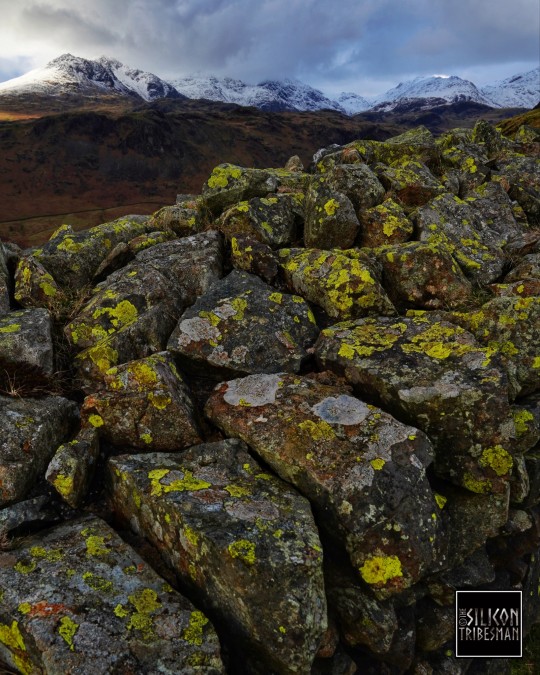

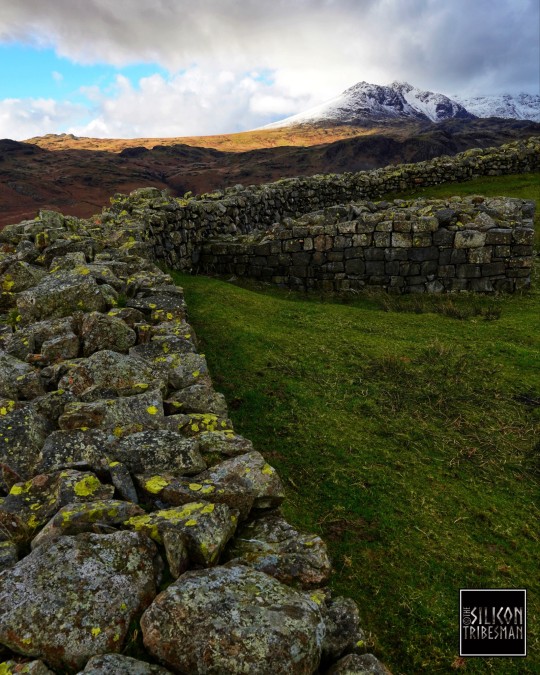



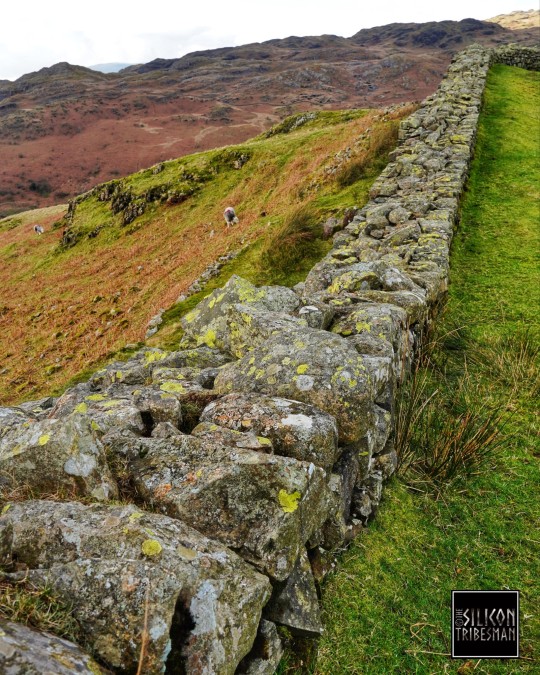
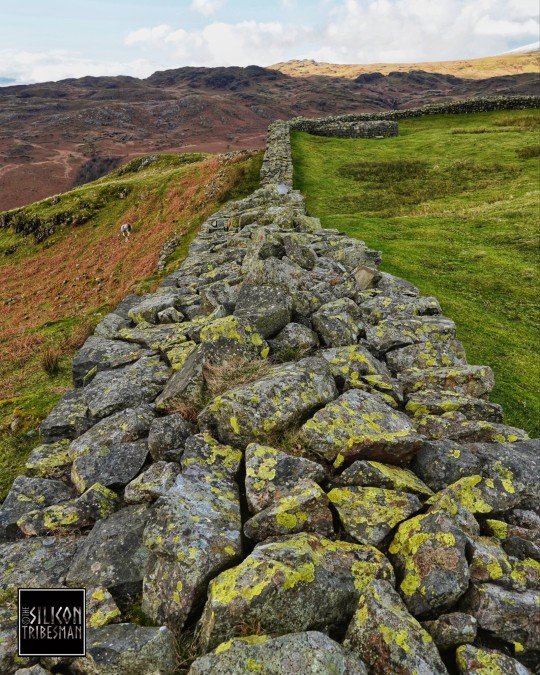

Hardknott Roman Fort, Hardknott Pass, Lake District
#Roman#romans#roman living#roman britain#roman army#roman soldiers#roman fort#hardknott pass#roman road#routeways#wild places#outdoors#landscape#stoneworks#roman ruins#archaeology#prehistory#ancient history
23 notes
·
View notes
Text
The NEW Ultrastenos and its Ironic History
So those that have been keeping up with my posts on mekosuchines might recall the name Ultrastenos, as I've talked about this genus back in August of last year. If you've read that post you might also remember how I highlight at multiple points that a lot of the info was tentative on the basis that Ultrastenos was highly incomplete and that close relatives awaited description.
You may also remember "Baru" huberi, a small mekosuchine that lived roughly around the same time, clearly distinct from Baru yet at that point still unnamed. Oh, how I wished for the former to get more material and for the latter to recieve a proper genus assignment.
My now outdated reconstructions for "Baru" huberi (the small one in the left image) and Ultrastenos (right image)

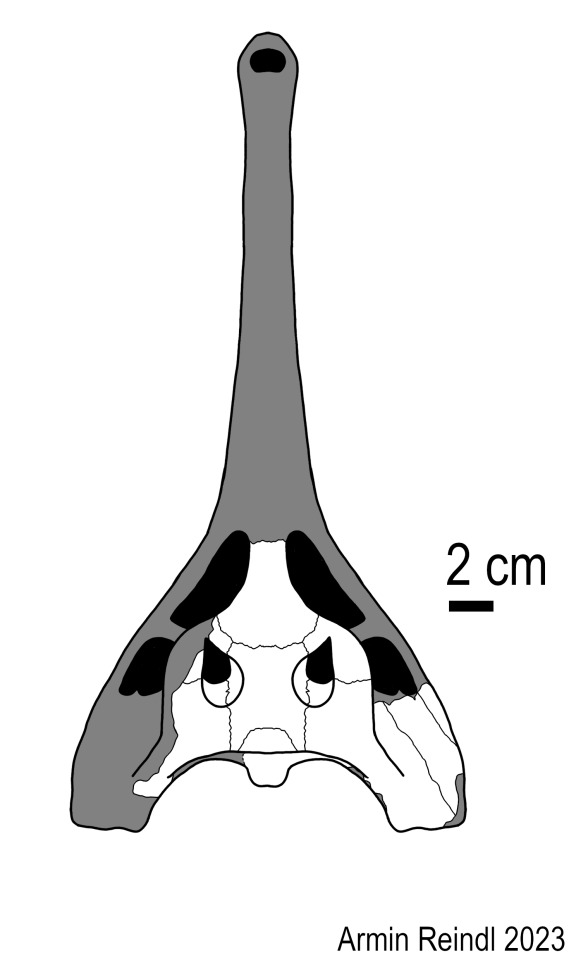
And then the monkey's paw curled.
As it turns out....they are the same damn animal.
Now, back when "Baru" huberi was described, Willis also named a bunch of other mekosuchines from the same locality (the White Hunter Site of the Riversleigh WHA) and described even more material that remained unnamed, including the White Hunter Cranial Form 1. Now, when Ultrastenos was named in 2016, the type material was from the Low Lion Site (also Riversleigh), but importantly, the skull tables identified as WHCF1 were also assigned to the genus (and were the basis for my reconstruction).
Well, re-examination has shown that the WHCF1 and the holotype of "Baru" huberi aren't just a single species.....THEY ARE A SINGLE INDIVIDUAL.
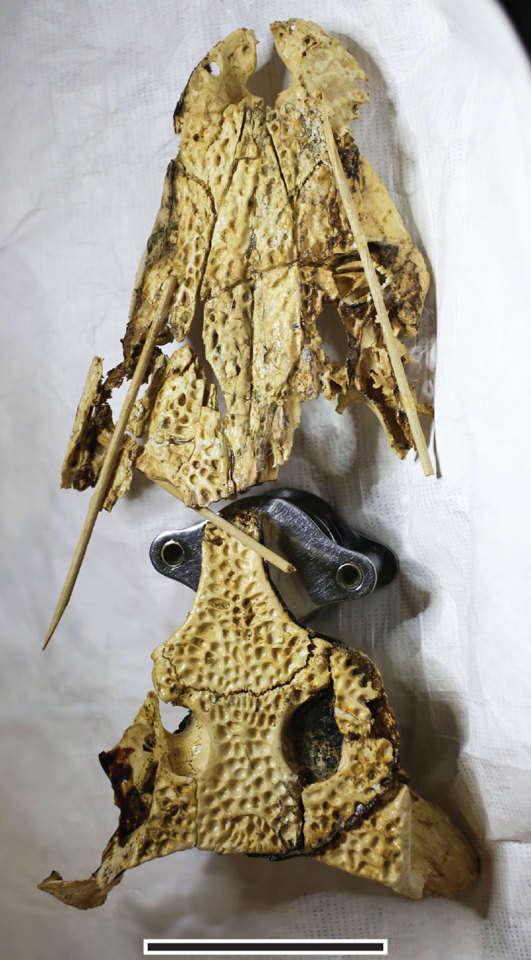
Given the fact that the assignment of the skull table to the Low Lion Ultrastenos material still holds up, this means that Ultrastenos willisi and "Baru" huberi are a single taxon. Which consequently requires some reshuffling of the names.
"Baru" huberi was named first, so the species name takes priority and continues being used. However, since it was never given a genus name, Ultrastenos does stay valid. Except now it's called Ultrastenos huberi, not Ultrastenos willisi.
A name that has aged like milk. Back in 2016 it was proposed that Ultrastenos had a very narrow snout (thus the name), so now that we know that the rostrum was flat and mesorostrine, the name really is just wrong.
So next up, lets examine what went wrong.
As I said before, Ultrastenos was fragmentary, so that certainly played a big part in it. But the team in charge of describing the animal still cited several lines of thinking to support their interpretation, most of which are now thoroughly debunked.
As an example, the lower jaw was rather shallow, however while this was initially taken as evidence for longirostry, the 2024 paper states that this only an argument against altirostry (a deep skull), not against a more generalized condition. The teeth were also initially used as evidence, citing their homodont condition (the teeth looked uniform), HOWEVER, the problem in that was that there were only a few teeth present, all of which notably do not bear any resemblance to the needle-like teeth seen in other long-snouted taxa. Another important clue initially taken to mean longirostry was the orientation of the quadrate area and the seemingly sudden constriction of the lower jaw. But the quadrate area was not found in articulation and would support a generalized skull form if simply rotated a little, while the constriction of the mandible appears to at least be partially exaggerated by preservation.
Of course, the fact that we now have proper material of the snout makes the interpretation of a generalized skull shape a lot more solid.
Image 1: The left and right halves of the mandible of Ultrastenos compared to that of Baru iylwenpeny (D), note how the right half is a lot more straight.
Image 2: The initial reconstruction of the quadrate area of Ultrastenos compared to one that is slightly rotated
Image 3: The revamped skull reconstruction by Yates and Stein

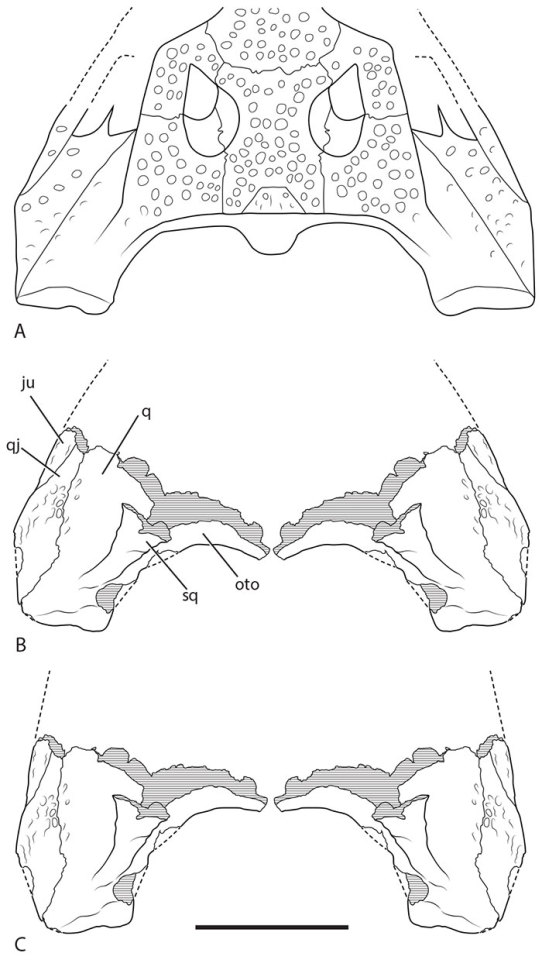
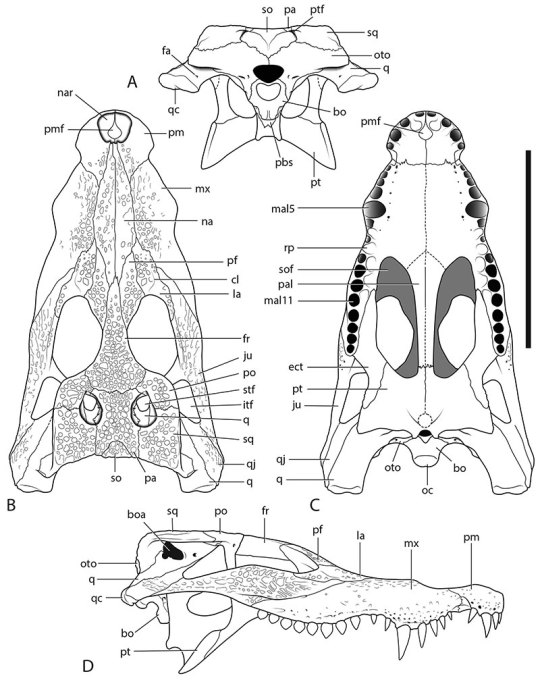
The size of the animal does stay relatively unaffected by these new discoveries. "Baru" huberi has been estimated at only around 1.5 meters in length and my own scaling of Ultrastenos got up to 2 meters, which seems to be in line with what is still assumed for this animal. So among aquatic mekosuchines, its still rather small.
There are however some interesting implications for mekosuchines at large. Now that we no longer have a longirostrine member of this family, one has to wonder, why is that?
Well, there might be several reasons.
It could be that the types of environments that were present in Cenozoic Australia simply didn't support such animals. Even in the type description, its been noted that the Riversleigh isn't exactly known for its fish remains, leading to the idea that Ultrastenos might have gone for other small vertebrates like frogs. Hell, the ecology of Baru might suggest that the reason that this genus was so robust might tie to the fact that the local bodies of water just weren't deep enough to allow the typical crocodilian grab-and-drown tactic.
Competition might have been another factor. In environments that may have been more suitable for such morphology, mekosuchines might have been beaten to the punch by other types of crocodilians. Harpacochampsa for example, tho originally thought to be a mekosuchine, is now more often regarded as either an unrelated crocodile or a gharial and its very possible that it filling the nische of a longirostrine simply meant that mekosuchines didn't have the opportunity to expand into that space. Same goes for Gunggamarandu in the Pliocene and Pleistocene and Freshwater Crocodiles from the Pleistocene onwards. (Tho it should be noted that both Harpacochampsa and Gunggamarandu are so fragmentary that their snout shape is technically unknown).
Images: Gunggamarandu (Eleanor Pease), Harpacochampsa (ArtbyJRC) and Freshies (Antoni Camozzato) might have been key factors in why mekosuchines never evolved slender snouts.
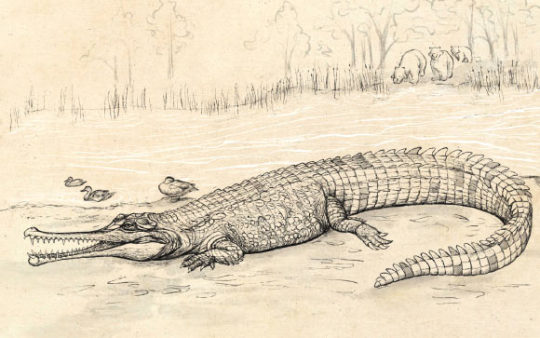
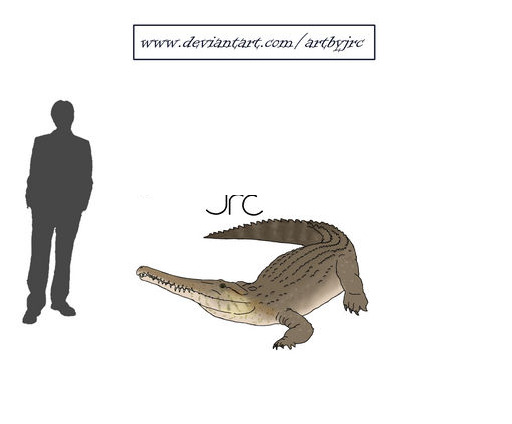
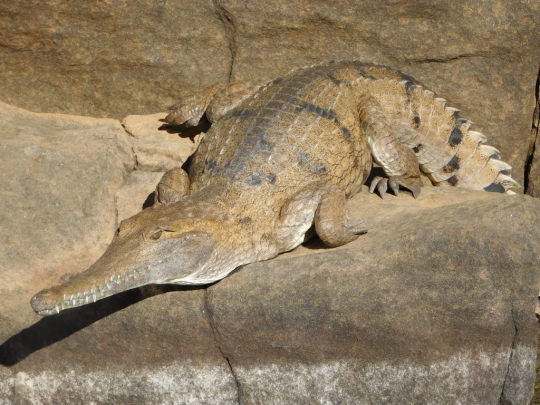
Finally, its also possible that something in the growth of mekosuchines simply prevents them from evolving longirostrine skulls, which Yates and Stein liken to alligatoroids (notably the closest alligatoroids got to traditional longirostry as seen in gharials is the Rio Apaporis Caiman, and even that one is closer to some extant crocodiles in its morphology).
Whatever the case, I for one mourn the loss of our long-snouted Ultrastenos. Tho as a note for any paleoartists, there is not a single illustration of this new interpretation since nobody ever drew "Baru" huberi either. Wink wink nudge nudge
Links:
https://en.wikipedia.org/wiki/Ultrasteno
Ultrastenos revised (palaeo-electronica.org)
#long post#harpacochampsa#ultrastenos#baru huberi#mekosuchinae#gunggamarandu#oligocene#riversleigh#paleontology#palaeoblr#croc#crocodile#crocodilia#prehistory#cenozoic
20 notes
·
View notes
Text

Homo Sapiens boy together again with his Neanderthal girl on the first warm day of Spring
#art#neanderthals#paleoart#prehistory#love#likes and reblogs are super appreciated!! i worked so hard on this#look out for the print!!
12K notes
·
View notes
Text
i love when animals just really really fuck up scientific data by just doing natural behaviours. the only remains we have of gigantopithecus (absolutely giant prehistoric hominid that went extinct somewhere around 300 tya) are teeth and a couple mandibles. because porcupines ate ALL of the skeletons
5K notes
·
View notes
Text

field reporter
20K notes
·
View notes
Video
Prehistoric Planet finally gives us the True Rival to the Tyrant Lizard King and it's NOT a Dinosaur.
#prehistoric planet#prehistoric planet 2#t-rex#tyrannosaurus rex#quetzalcoatlus#quetzalcoatl#prehistoric planet season 2#prehistoric#prehistory#feathered dinosaurs#dinosaurs#t rex#tyrannosaurus#pterosaur#pterosaurs#walking with dinosaurs#wwd#jurassic park#jurassic world#jurassic world dominion#azdarchid#Alamosaurus#nature#animals
13K notes
·
View notes
Text
Just a reminder that while prehistoric fish are cool, there are plenty of neat babies still around!

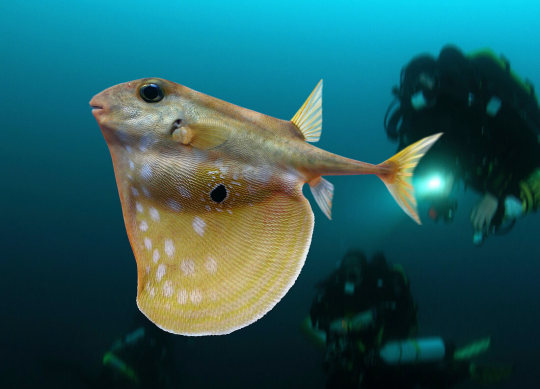



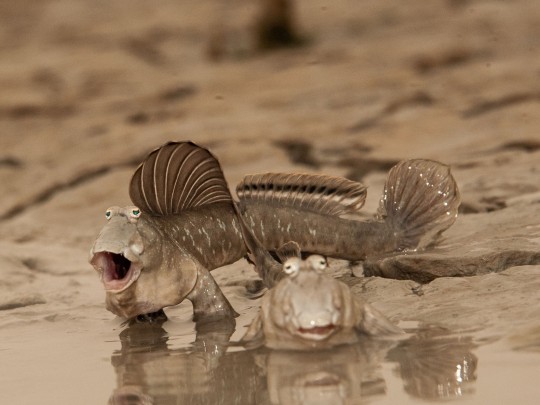
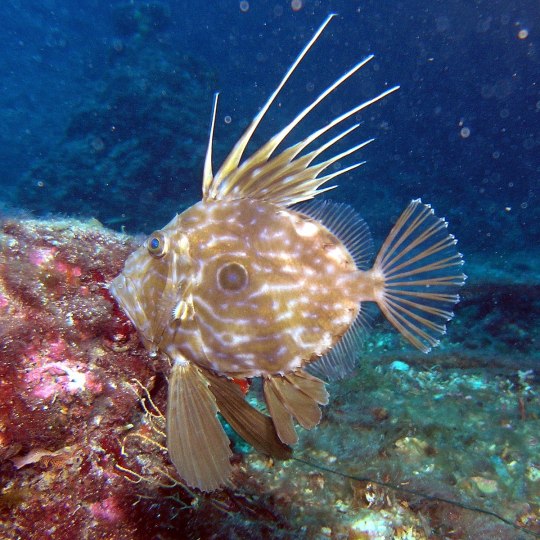
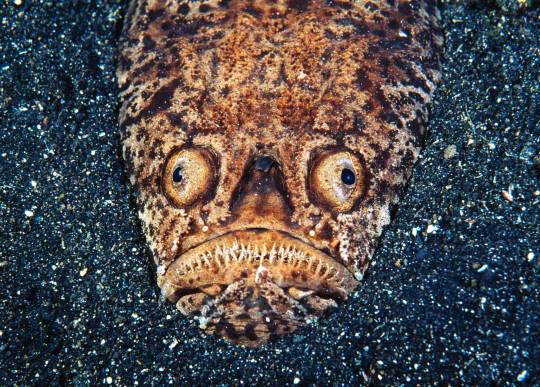

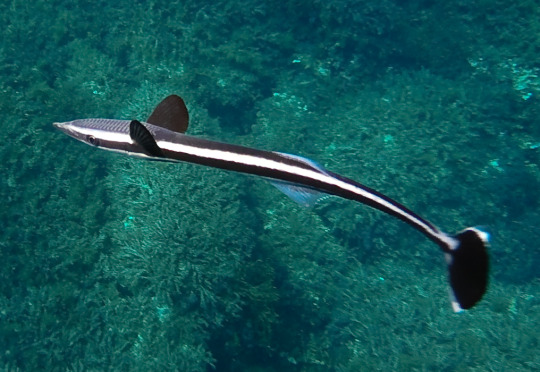
4K notes
·
View notes
Text
In the 1980s in France, musicologists and archaeologists Iégor Reznikoff and Michel Dauvois used their voices to explore caves with notable Paleolithic wall paintings. By singing simple notes and whistling, they mapped their perceptions of the caves’ acoustics.
They found that paintings were often located in places that were particularly resonant. Animal paintings were common in resonant chambers and in places along the walls that produced strong reverberation.
As they crawled through narrow tunnels, they discovered painted red dots exactly located in the most resonant places. The entrances to these tunnels were also marked with paintings. Resonant recesses in walls were especially heavily ornamented.
In a 2017 study, a dozen acousticians, archaeologists, and musicians measured the sonic qualities of cave interiors in northern Spain. The team, led by acoustic scientist Bruno Fazenda, used speakers, computers, and microphone arrays to measure the behavior of precisely calibrated tones within the cave.
The caves they studied contain wall art spanning much of the Paleolithic, dating from about forty thousand years to fifteen thousand years ago. The art includes handprints, abstract points and lines, and a bestiary of Paleolithic animals including birds, fish, horses, bovids, reindeer, bear, ibex, cetaceans, and humanlike figures.
From hundreds of standardized measurements, the team found that painted red dots and lines, the oldest wall markings, are associated with parts of the cave where low frequencies resonate and sonic clarity is high due to modest reverberation.
These would have been excellent places for speech and more complex forms of music, not muddied by excessive reverberation. Animal paintings and handprints were also likely to be in places where clarity is high and overall reverberation is low but with a good low-frequency response.
These are the qualities that we seek now in modern performance spaces.
Sounds Wild and Broken, David George Haskell
10K notes
·
View notes
Text
Spinosaurus full combo attack animation by Jean Nguyen!
44K notes
·
View notes
Text
I Love Prehistoric Ecosystems So Much
yeah individual taxa are cool and everything but no species is an island. What did it live with? What did it eat, what ate it? Did it have "friends" (term used loosely)? What was the environment like, where did they get water, what was the climate?
Tell me the whole story
Tell me how they lived
6K notes
·
View notes
Text

The Utroba Cave, in Bulgaria, is a natural horizontal fissure in a rock that has been further cut and shaped by human hands more than 3000 years ago to resemble a womb. At midday, light seeps into the cave through an opening in the ceiling, projecting an image of a phallus on to the floor
More: https://thetravelbible.com/top-artifacts-from-the-stone-age/
3K notes
·
View notes
Text
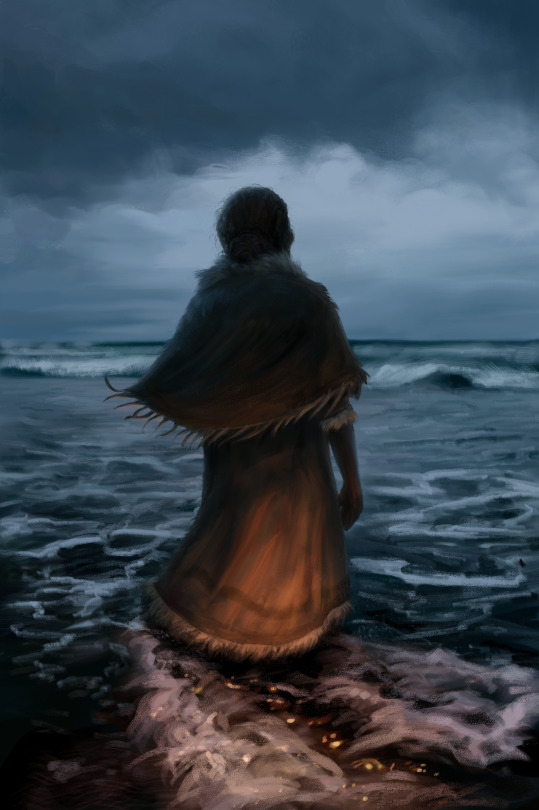
VERGE OF THE WIDER SEA -
My Paleolithic character Nisse at the edge of the western ocean.
[old art]
#paleoblr#paleolithic oc#paleoart#gravettian#aurignaican#My art#stone age#landscape#Prehistoric oc#prehistoric europe#art#artwork#digital art#prehistory#original character art#original character#nisse
3K notes
·
View notes
Text
prehistoric tarot - the emperor / the empress
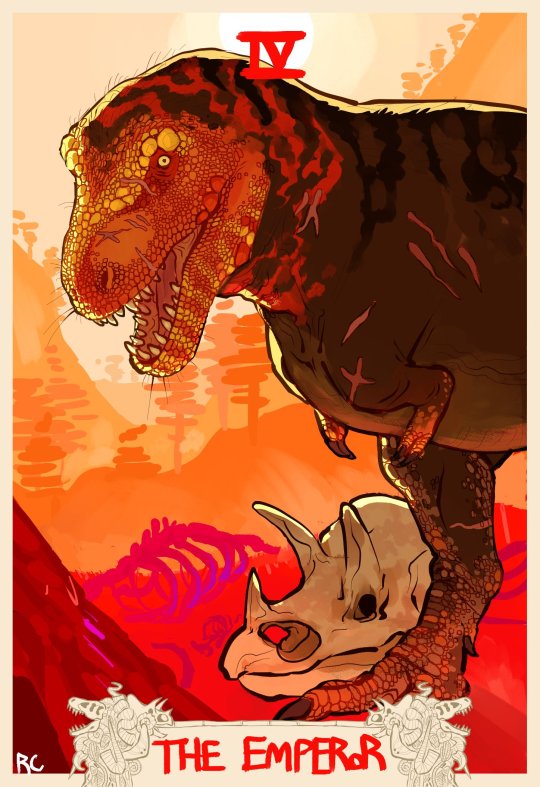

#tarot deck#prehistory#dinosaurs#paleoart#paleontology#tyrannosaurus#triceratops#t rex#rorys art#hall of fame
11K notes
·
View notes
Text



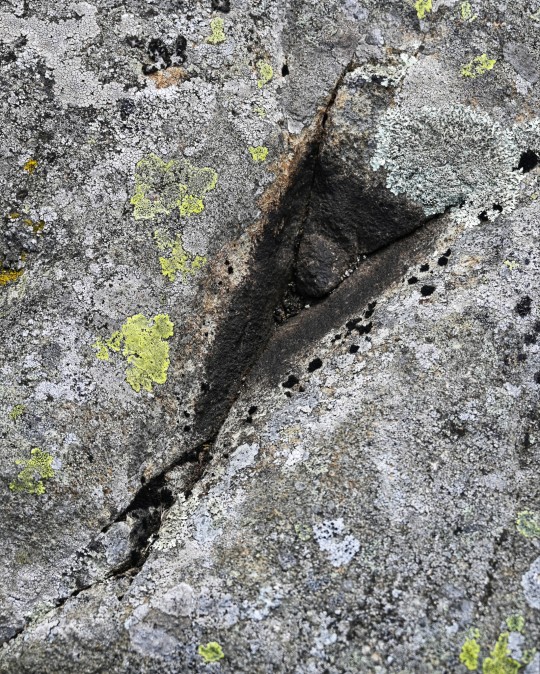
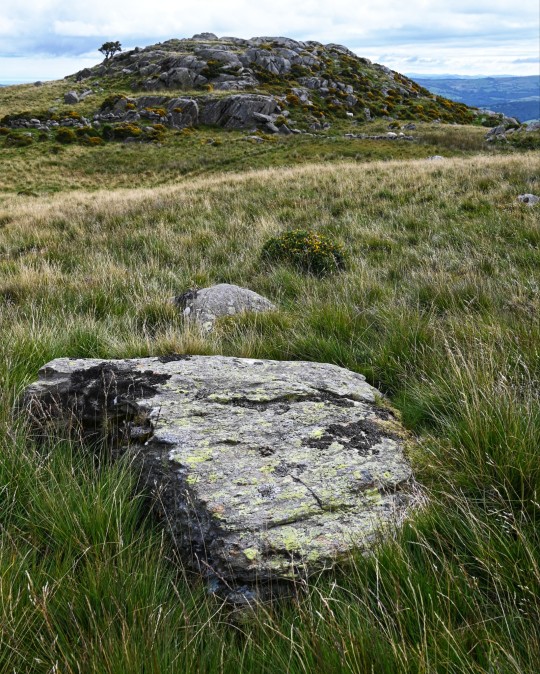
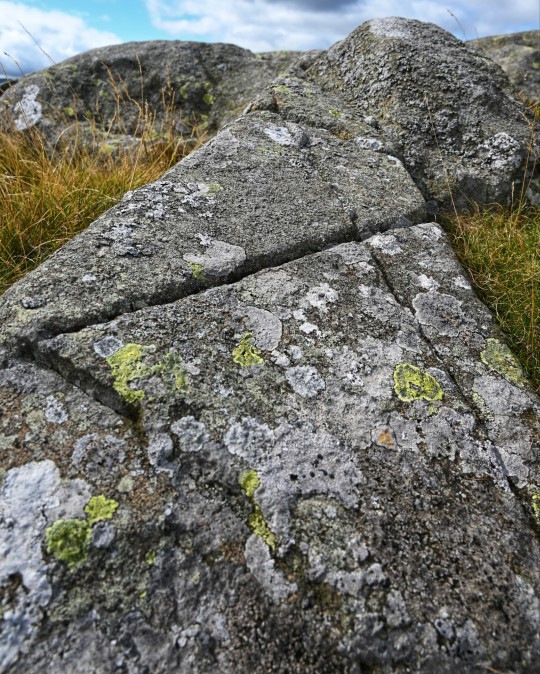

Craig Celynin Ancient Landscape, nr. Rowen, Conwy Valley, Wales
#ice age#stone age#bronze age#copper age#iron age#neolithic#mesolithic#calcholithic#paleolithic#prehistoric#prehistory#landscape#wales#archaeology#geology
4K notes
·
View notes
Text
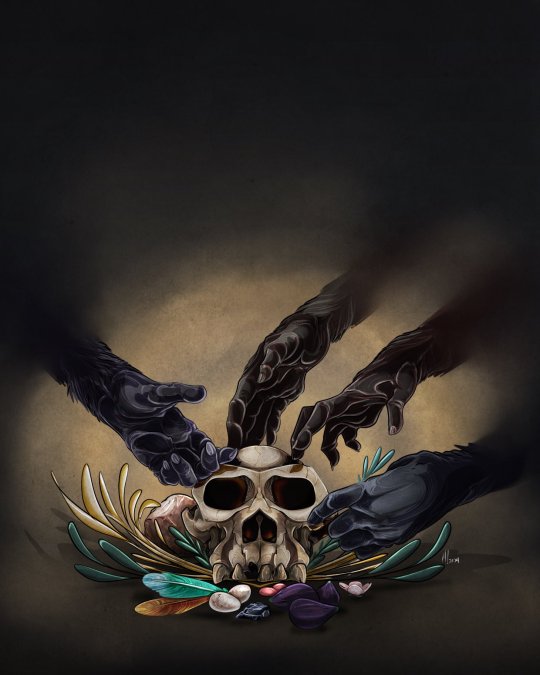
First Funeral.
#Early hominid#Prehistoric hominid#Skull#Funeral#Offerings#Feathers#Bones#Stone tools#Fruit#Plants#Prehistory
1K notes
·
View notes
Text
There is a growing body of physiological, anatomical, ethnographic, and archaeological evidence to suggest that not only did women hunt in our evolutionary past, but they may well have been better suited for such an endurance-dependent activity.
We are both biological anthropologists. I (co-author Cara) specialize in the physiology of humans who live in extreme conditions, using my research to reconstruct how our ancestors may have adapted to different climates. And I (co-author Sarah) study Neanderthal and early modern human health. I also excavate at their archaeological sites.
It’s not uncommon for scientists like us—who attempt to include the contributions of all individuals, regardless of sex and gender, in reconstructions of our evolutionary past—to be accused of rewriting the past to fulfill a politically correct, woke agenda. The actual evidence speaks for itself, though: Gendered labor roles did not exist in the Paleolithic era, which lasted from 3.3 million years ago until 12,000 years ago. The story is written in human bodies, now and in the past.
[...]
Our Neanderthal cousins, a group of humans who lived across Western and Central Eurasia approximately 250,000 to 40,000 years ago, formed small, highly nomadic bands. Fossil evidence shows females and males experienced the same bony traumas across their bodies—a signature of a hard life hunting deer, aurochs, and woolly mammoths. Tooth wear that results from using the front teeth as a third hand, likely in tasks like tanning hides, is equally evident across females and males.
This nongendered picture should not be surprising when you imagine small-group living. Everyone needs to contribute to the tasks necessary for group survival—chiefly, producing food and shelter, and raising children. Individual mothers are not solely responsible for their children; in forager communities, the whole group contributes to child care.
You might imagine this unified labor strategy then changed in early modern humans, but archaeological and anatomical evidence shows it did not. Upper Paleolithic modern humans leaving Africa and entering Europe and Asia show very few sexed differences in trauma and repetitive motion wear. One difference is more evidence of “thrower’s elbow” in males than females, though some females shared these pathologies.
And this was also the time when people were innovating with hunting technologies like atlatls (spear throwers), fishing hooks and nets, and bow and arrows—alleviating some of the wear and tear hunting would take on their bodies. A recent archaeological experiment found that using atlatls decreased sex differences in the speed of spears thrown by contemporary men and women.
Even in death, there are no sexed differences in how Neanderthals or modern humans buried their dead or the goods affiliated with their graves. These indicators of differential gendered social status do not arrive until agriculture, with its stratified economic system and monopolizable resources.
All this evidence suggests Paleolithic women and men did not occupy differing roles or social realms.
1K notes
·
View notes